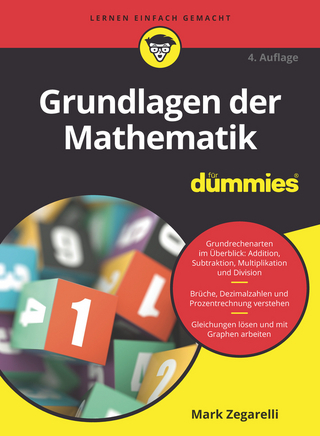
Kepler's Conjecture
How Some of the Greatest Minds in History Helped Solve One of the Oldest Math Problems in the World
Seiten
2003
John Wiley & Sons Inc (Verlag)
978-0-471-08601-7 (ISBN)
John Wiley & Sons Inc (Verlag)
978-0-471-08601-7 (ISBN)
- Titel ist leider vergriffen;
keine Neuauflage - Artikel merken
A math history that relates the 400 year story of Kepler's Conjecture, which, after Fermat's celebrated Last Theorem, was the greatest mathematical problem in the world.
The fascinating story of a problem that perplexed mathematicians for nearly 400 years In 1611, Johannes Kepler proposed that the best way to pack spheres as densely as possible was to pile them up in the same way that grocers stack oranges or tomatoes. This proposition, known as Kepler's Conjecture, seemed obvious to everyone except mathematicians, who seldom take anyone's word for anything. In the tradition of Fermat's Enigma, George Szpiro shows how the problem engaged and stymied many men of genius over the centuries----Sir Walter Raleigh, astronomer Tycho Brahe, Sir Isaac Newton, mathematicians C. F. Gauss and David Hilbert, and R. Buckminster Fuller, to name a few----until Thomas Hales of the University of Michigan submitted what seems to be a definitive proof in 1998. George G. Szpiro (Jerusalem, Israel) is a mathematician turned journalist. He is currently the Israel correspondent for the Swiss daily Neue Zurcher Zeitung.
The fascinating story of a problem that perplexed mathematicians for nearly 400 years In 1611, Johannes Kepler proposed that the best way to pack spheres as densely as possible was to pile them up in the same way that grocers stack oranges or tomatoes. This proposition, known as Kepler's Conjecture, seemed obvious to everyone except mathematicians, who seldom take anyone's word for anything. In the tradition of Fermat's Enigma, George Szpiro shows how the problem engaged and stymied many men of genius over the centuries----Sir Walter Raleigh, astronomer Tycho Brahe, Sir Isaac Newton, mathematicians C. F. Gauss and David Hilbert, and R. Buckminster Fuller, to name a few----until Thomas Hales of the University of Michigan submitted what seems to be a definitive proof in 1998. George G. Szpiro (Jerusalem, Israel) is a mathematician turned journalist. He is currently the Israel correspondent for the Swiss daily Neue Zurcher Zeitung.
GEORGE G. SZPIRO, Ph.D., is a mathematician turned journalist. He is currently the Israel correspondent for the Swiss daily Neue Zurcher Zeitung.
Preface. Cannonballs and Melons. The Puzzle of the Dozen Spheres. Fire Hydrants and Soccer Players. Thue s Two Attempts and Fejes Toth s Achievement. Twelve s Company, Thirteen s a Crowd. Nets and Knots. Twisted Boxes. No Dancing at This Congress. The Race for the Upper Bound. Right Angles for Round Spaces. Wobbly Balls and Hybrid Stars. Simplex, Cplex, and Symbolic Mathematics. But Is It Really a Proof? Beehives Again. This Is Not An Epilogue. Mathematical Appendices. Bibliography. Index.
| Erscheint lt. Verlag | 25.3.2003 |
|---|---|
| Zusatzinfo | Illustrations |
| Verlagsort | New York |
| Sprache | englisch |
| Maße | 156 x 238 mm |
| Gewicht | 567 g |
| Einbandart | gebunden |
| Themenwelt | Sachbuch/Ratgeber ► Natur / Technik |
| Mathematik / Informatik ► Mathematik ► Allgemeines / Lexika | |
| Mathematik / Informatik ► Mathematik ► Mathematische Spiele und Unterhaltung | |
| ISBN-10 | 0-471-08601-0 / 0471086010 |
| ISBN-13 | 978-0-471-08601-7 / 9780471086017 |
| Zustand | Neuware |
| Haben Sie eine Frage zum Produkt? |
Mehr entdecken
aus dem Bereich
aus dem Bereich
Buch | Hardcover (2023)
Hanser, Carl (Verlag)
29,99 €


